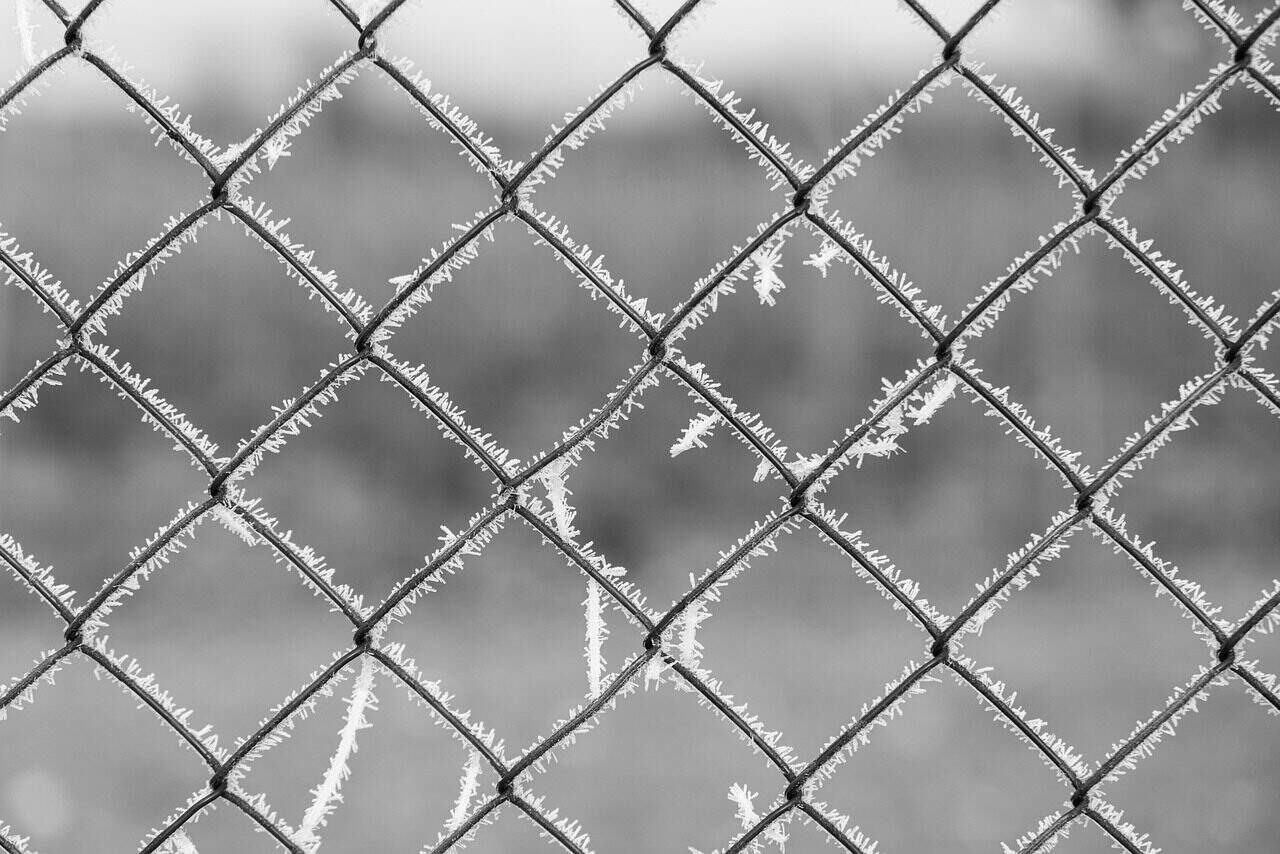Cold Heading Forming: A Complete Guide to How It Works and Why It Matters
Introdução
Cold heading forming is much more than just a fast way to make screws and bolts. It’s a smart manufacturing process that uses the science of how metals behave under pressure. While other manufacturing methods cut away material, cold heading pushes and shapes it, changing the metal’s inner structure to create stronger parts. This article explains how cold heading works for anyone interested in understanding this important manufacturing process. We’ll look at the basic ideas behind how metals change shape and why this makes them stronger. You’ll learn about the machines and step-by-step operations that turn theory into real products. Most importantly, we’ll explore how the process changes the metal’s internal structure, why certain materials work better than others, and how to fix common problems that can happen during production. This guide will help you understand how cold heading creates strong, reliable, and cost-effective parts.
How Metals Change Shape Under Pressure
Understanding cold heading starts with learning how metals behave when you apply huge amounts of pressure to them. The process works by permanently changing the shape of metal, and this controlled change determines what the final part looks like and how well it performs.
Permanent Shape Change and Getting Stronger
When you apply force to a piece of metal, it first bends in a way that lets it spring back to its original shape if you remove the force. This is called elastic deformation. However, once you apply enough stress to go beyond the metal’s elastic limit, permanent deformation begins. This means the metal won’t return to its original shape. At a microscopic level, this happens because tiny defects in the metal’s crystal structure, called dislocations, start moving and sliding past each other.
As the deformation continues, these dislocations multiply and start getting tangled up with each other, making it harder for them to move. This is called strain hardening or work hardening. It becomes progressively harder to keep deforming the material, which makes it harder and stronger. For example, the work hardening that happens during cold heading can increase the strength of common low-carbon steel by 50-100%. This is one of the main benefits of the process, but it comes with a trade-off: the metal becomes less bendable, which must be carefully managed when designing the process.
How Grain Flow Works
Metals are made up of tiny crystalline grains. In raw wire or bar material, these grains are typically stretched out in the direction the material was drawn. The direction and continuity of these grains, called grain flow, have a huge impact on how strong a part is.
A key advantage of cold heading is that it doesn’t cut through these grains like machining does. Instead, it forces them to flow and follow the shape of the die. This creates a continuous, unbroken grain structure that follows the curves of the part, especially at critical stress points like where a bolt’s head meets its shaft. In contrast, machining cuts directly through the grain structure, creating sharp intersections that act as weak points where the part might fail. A good comparison is a board shaped with the wood grain (strong) versus one cut across the grain (weak). The best way to understand this advantage is to picture the unbroken lines of grain flow in a cold-headed part compared to the cut lines in a machined part.

Stress, Strain, and How Materials Respond
The stress-strain curve is an important engineering tool for predicting how a material will behave during cold heading. It shows the relationship between the stress (force per unit area) applied to a material and the resulting strain (deformation). Understanding this curve helps engineers choose the right materials and design forming steps that work within the material’s limits.
- Elastic Region: The initial, straight portion of the curve. Here, deformation is temporary and the material will spring back to its original shape when you remove the load. The slope of this line is called the Modulus of Elasticity.
- Yield Point: The point where the material switches from elastic to permanent deformation. Beyond this point, permanent deformation occurs.
- Ultimate Tensile Strength (UTS): The maximum stress the material can handle while being stretched before it starts to narrow and fail. In cold heading, forces must be carefully controlled to stay below this limit.
- Fracture Point: The point where the material finally breaks. The region between the yield point and the fracture point represents the range where permanent deformation can happen, which is the working window for cold heading.
How Cold Heading Machines Work
Turning the principles of metal deformation into a finished part requires highly specialized machinery. A cold heading machine, or “header,” is an amazing piece of mechanical precision, designed to perform a sequence of forming operations at incredible speeds.
From Wire to Blank
The process starts with wire stock, which is fed from a large coil into the header. The first station has a series of straightening rollers that remove the coil’s curve, making sure the material is perfectly straight. Right after this, a cutting mechanism cuts the wire to a precise, predetermined length. This cut piece is called a “blank.” The volume of this blank is one of the most critical factors in the entire process. It must contain exactly the right amount of material needed to completely fill the final die cavity. Any significant variation in blank volume will result in either an incompletely formed part or excessive pressure that can damage the tooling.
Dies, Punches, and Stations
The core of the header consists of a stationary die block and a moving ram. The die block holds a series of dies, each containing a cavity that represents a step toward the part’s final shape. The ram holds a corresponding series of punches. The process works step by step: the blank is moved from the first station into the first die. The punch moves forward, applying huge force to reshape the blank within the die cavity. The partially formed part is then pushed out and moved to the next station, where a different die and punch set perform the next operation. This continues through multiple stations—typically from two to six—with each station performing a specific forming action until the final shape is achieved. This multi-station approach allows for the creation of highly complex shapes by breaking down the total deformation into a series of manageable steps.
Main Forming Operations
Each station in a header is designed to perform a specific type of forming operation. The combination and sequence of these operations determine the final part shape.
- Upsetting/Heading: This is the most basic operation, where the length of the blank is compressed, causing the material to flow outward and increase in diameter. This is how the head of a bolt or screw is formed. The ratio of the length of unsupported material to its diameter (the L/D ratio) is a critical design constraint to prevent buckling.
- Forward Extrusion: In this operation, the punch forces the material through a die opening that is smaller than the initial blank diameter. This reduces the part’s diameter and makes it longer, causing the grain structure to flow lengthwise. This is used to form the shaft of a shoulder bolt or stepped pin.
- Backward Extrusion: Here, the punch presses into the material, but instead of the material flowing forward through an opening, it is forced to flow backward, up and around the punch itself. This is used to create hollow sections or cups.
- Trimming: After upsetting creates a round head, a trimming die is often used to cut away the excess material from the edges, creating a hexagonal, square, or other non-circular shape.
- Piercing: This is a cutting operation used to punch a hole through the part, such as for a hollow rivet. It is typically performed in a final station after the main forming is complete.
Table 1: Analysis of Primary Cold Heading Operations
| Operation | Mechanical Action | Effect on Material | Typical Application Example |
| Upsetting | Axial compression, increasing diameter. | Compresses grain structure, gathers material. | Head of a bolt or screw. |
| Extrusion | Forcing material through a smaller orifice. | Elongates grain structure, reduces diameter. | Shank of a stepped-pin or shoulder bolt. |
| Piercing | Shearing action to create an internal hole. | Creates a clean break, minimal material flow. | Creating a hole in a rivet or nut. |
| Trimming | Shearing excess material from the periphery. | Removes flash, defines final head shape. | Forming a hex head on a bolt. |
The Science Behind Stronger Materials
The real value of cold heading becomes clear when you examine the material at a microscopic level. The process doesn’t just reshape the metal; it fundamentally changes its internal structure, leading to significant improvements in how well it performs. This section goes beyond the simple concept of grain flow to explore the deeper material science at work.
Smaller Grains and More Defects Make Stronger Metal
The severe deformation that happens during cold heading puts a massive amount of energy into the material. This can cause something called grain refinement. The original, larger grains are broken down and reformed into much finer, more uniform grain structure. Smaller grain size increases strength and toughness because the increased number of grain boundaries acts as obstacles to dislocation movement.
At the same time, the process dramatically increases dislocation density. As discussed earlier, these crystal lattice defects become tangled, which is the main reason behind work hardening. The higher the dislocation density, the more stress is needed to cause further deformation, directly translating to increased strength and hardness. Essentially, cold heading uses the material’s own crystal structure to build a stronger component from within, without adding other metals or heat.
Measuring How Much Stronger Parts Get
The theoretical benefits of cold heading show up as measurable improvements in a part’s mechanical properties. The combination of work hardening and grain refinement results in a component that is significantly stronger than the raw material it was made from, and also stronger than an identical part made by machining.
For example, consider a common material like AISI 1022 steel. In its raw, softened state, it might have a surface hardness of about 75 HRB and a tensile strength of around 450 MPa. After being cold-headed into a complex fastener, the heavily worked areas, such as where the head meets the shaft, can show a surface hardness exceeding 95 HRB and a tensile strength over 700 MPa. Furthermore, the smooth, continuous grain flow created by the process drastically improves fatigue life. By eliminating the sharp, cut grain boundaries that act as stress concentration points in machined parts, a cold-headed component can withstand significantly more repeated loading before fatigue cracks start and spread.

The Role of Heat Treatment
While work hardening is a main benefit, it can also be a limitation. Some materials, particularly stainless steels and high-carbon alloys, have a high rate of work hardening. As they are formed, they can become so hard and brittle that they exceed the material’s ability to be formed, leading to cracking or catastrophic tool failure.
To overcome this, heat treatment between forming steps is often used. This is a controlled heating process performed between forming stages. The partially formed part is heated to a specific temperature, held for a period, and then cooled. This process relieves the internal stresses built up during forming and recrystallizes the grain structure, restoring the material’s ability to bend. This allows for further, severe deformation in subsequent heading stations. From experience, when forming complex parts from 300-series stainless steel, heat treatment between steps is often required after a 60-70% reduction in area to prevent work hardening from exceeding the forming limits of the material and tooling.
Choosing the Right Materials
The success of a cold heading application critically depends on selecting the right material. The choice involves a careful balance between a material’s ability to be formed and its ability to meet the final part’s performance requirements for strength, corrosion resistance, and temperature tolerance.
Key Properties for Good Forming
Not all metals are suitable for cold heading. The ideal material has a specific set of properties that allow it to withstand severe deformation without failing.
- Bendability / Low Yield-to-Tensile Strength Ratio: Bendability is a measure of a material’s ability to deform permanently before breaking. High bendability is essential. A related and more precise measure is the ratio of yield strength to ultimate tensile strength (UTS). A low ratio indicates a large range for permanent deformation, which is ideal for cold forming.
- Low Work-Hardening Rate: While work hardening strengthens the part, a material that hardens too quickly will require excessive forming forces. This can lead to early tool wear and failure, and may require heat treatment between steps, adding cost and complexity.
- Chemical Composition and Quality: The presence of certain elements can significantly impact how well a material forms. Sulfur and phosphorus, for example, reduce bendability and are kept to a minimum in “Heading Quality” steels. The raw material must also be free from internal seams, voids, and surface defects, as these imperfections can become crack starting points under high forming pressures.

Common Material Types
A wide range of materials can be cold-headed, each offering a unique combination of properties.
- Low-Carbon Steels: Grades like 1008/1010 Steel are the workhorses of the industry due to their excellent bendability, low cost, and predictable response to work hardening.
- Alloy Steels: Grades like 4037 Alloy Steel or 4140 provide higher strength and are often selected for applications requiring subsequent heat treatment to achieve specific hardness and toughness properties. They are harder to form than low-carbon steels.
- Stainless Steels: Types like 302/304 Stainless Steel are chosen for their superior corrosion resistance. They have a very high work-hardening rate, making them challenging to form and often requiring special lubricants and tooling.
- Aluminum Alloys: Alloys such as 6061 Aluminum offer an excellent strength-to-weight ratio and good corrosion resistance, making them ideal for aerospace and automotive applications.
- Copper and Brass: These alloys are selected for their excellent electrical conductivity and corrosion resistance, primarily for electrical terminals and connectors.
Table 2: Technical Guide to Common Cold Heading Materials
| Material Class | Specific Grade(s) | Key Technical Characteristics | Formability Rating | Common Applications |
| Low-Carbon Steel | AISI 1008, 1018, 1022 | Excellent ductility, low cost, good response to work hardening. | Excelente | Standard screws, rivets, simple fasteners. |
| Aço-liga | AISI 4037, 4140, 8620 | Higher strength, requires annealing for complex shapes, suitable for heat treatment. | Good to Fair | High-strength structural bolts, automotive components. |
| Aço inoxidável | 302HQ, 304, 316 | High corrosion resistance, high work-hardening rate, requires special lubricants. | Fair | Fasteners for marine, medical, and food-grade use. |
| Aluminum Alloys | 2024, 6061, 7075 | Lightweight, good corrosion resistance, moderate strength. 2024 is strong but less formable. | Good (6061) | Aerospace fasteners, lightweight automotive parts. |
| Copper Alloys | Brass, Copper C110 | Excellent electrical conductivity, good formability, corrosion resistant. | Excelente | Electrical terminals, connectors, decorative rivets. |
Fixing Common Problems
Even with a well-designed process, defects can occur in cold heading production. An experienced engineer can diagnose these issues by connecting the visible defect back to the underlying principles of material science, tooling, and machine setup. This section provides a practical framework for identifying and solving common failure modes.
A Step-by-Step Problem-Solving Approach
Effective troubleshooting requires a systematic approach rather than random adjustments. When a defect is identified, the investigation should proceed in a logical order:
- Analyze the Defect: Describe the defect’s appearance, location, and how often it happens.
- Examine the Material: Verify the raw material is the correct grade and is free from pre-existing flaws like seams or chemical inconsistencies.
- Inspect the Tooling: Check dies and punches for wear, chipping, or buildup.
- Review the Machine Setup: Confirm that parameters like blank length, tool alignment, and transfer timing are correct.
Understanding Failure Types
Most defects can be traced back to a few core technical causes. By understanding the physics behind each failure mode, targeted corrective actions can be implemented.
- Cracked Heads: Cracks on the head surface are a classic sign of exceeding the material’s bendability. This can be caused by attempting too much deformation in a single station, a material with a high work-hardening rate, or the presence of seams in the raw wire that open up under pressure.
- Incomplete Fill: When the corners or details of a head are not fully formed, it indicates that the material did not completely fill the die cavity. This is most often caused by insufficient blank volume (the blank was cut too short). It can also result from trapped lubricant creating pressure that prevents full material flow, or simply a worn-out die cavity that is now oversized.
- Surface Folds/Laps: These defects appear as a seam on the surface where a small portion of the material has folded over on itself instead of compressing smoothly. This is typically a tool design issue, where the shape of the punch or die entry radius causes improper material flow during an upsetting operation.
- Tool Marks/Galling: Galling is the transfer of material between the workpiece and the tool surface, resulting in scratches and a poor finish. This is a lubrication failure. The extreme pressures in cold heading require a strong lubricant boundary layer. If this layer breaks down due to insufficient lubricant, incorrect lubricant type, or excessive heat, metal-to-metal contact will occur.
Table 3: Troubleshooting Matrix for Cold Heading Defects
| Defect | Visual Identification | Probable Technical Cause(s) | Recommended Corrective Action(s) |
| Head Cracks | Fissures or cracks on the surface or periphery of the head. | 1. Material’s formability limit exceeded. <br> 2. Work hardening is too rapid. <br> 3. Seams or flaws in raw wire. | 1. Switch to a more ductile material. <br> 2. Add an in-process anneal. <br> 3. Improve raw material inspection. |
| Incomplete Fill | Corners of the head are rounded or not fully formed. | 1. Incorrect blank volume (too short). <br> 2. Excessive lubricant trapping. <br> 3. Worn out die cavity. | 1. Adjust shear length. <br> 2. Add vents to tooling; use lower viscosity lubricant. <br> 3. Replace or rework the die. |
| Surface Folds | A lap or seam on the surface where material has folded over on itself. | 1. Poor die/punch design causing improper flow. <br> 2. Over-lubrication. | 1. Redesign punch face or die entry radius. <br> 2. Optimize lubricant application. |
| Tool Galling | Scratches or material transfer from the part to the tool (or vice-versa). | 1. Breakdown of the lubricant boundary layer. <br> 2. Incorrect tool material or coating for the workpiece. | 1. Use a high-pressure lubricant (e.g., phosphate soap). <br> 2. Use TiN or other PVD coatings on tooling. |
Conclusão
Cold heading forming demonstrates the power of applied material science. It is a process where a deep understanding of how material properties, tool geometry, and process physics work together is not just helpful, but essential for success. By controlling the permanent deformation of metal at a microscopic level, we can achieve results that are impossible with other methods. The key benefits—superior component strength from work hardening, exceptional fatigue life due to uninterrupted grain flow, and remarkable production efficiency—all come directly from these core principles. When its technical foundations are expertly understood and applied, cold heading stands as a premier manufacturing method for producing high-performance, precisely-shaped components that are engineered for reliability and long life.
- MIT News – Manufacturing and Materials https://news.mit.edu/topic/manufacturing
- UC Berkeley – Manufacturing Research https://me.berkeley.edu/research-areas-and-major-fields/manufacturing/
- SME – Society of Manufacturing Engineers https://www.sme.org/
- University of Stuttgart – Institute for Metal Forming Technology https://www.ifu.uni-stuttgart.de/en/
- RWTH Aachen – Institute of Metal Forming https://www.ibf.rwth-aachen.de/go/id/pepy/lidx/1
- University of Nottingham – Metal Forming Research https://www.nottingham.ac.uk/research/groups/advanced-manufacturing-technology-research-group/
- Manufacturing USA – Institutes Network https://www.manufacturingusa.com/institutes
- Caltech – Materials Science News https://www.caltech.edu/about/news
- ResearchGate – Manufacturing Engineering Topics https://www.researchgate.net/topic/Manufacturing-Engineering
- Society for Mining, Metallurgy & Exploration https://www.smenet.org/





